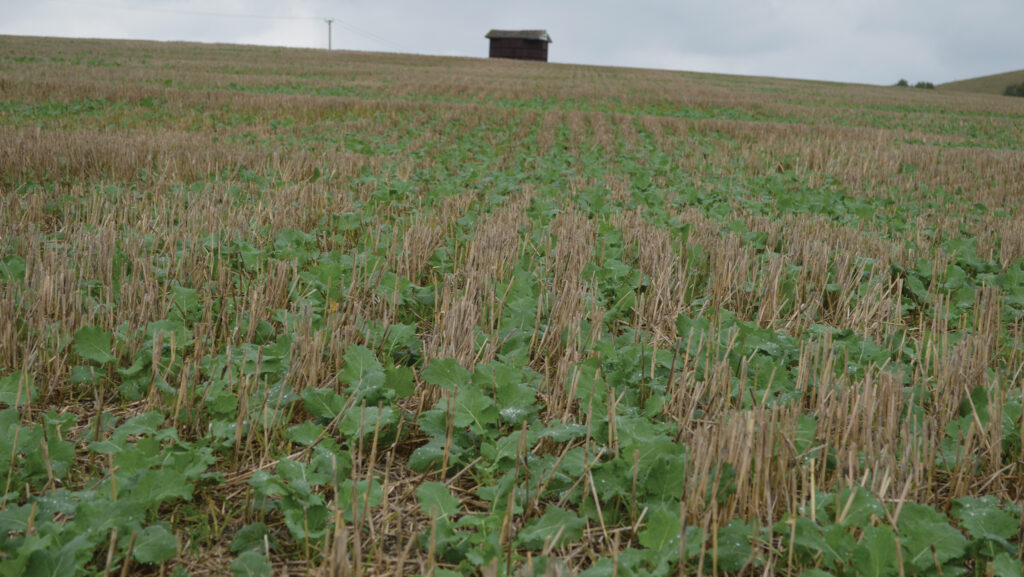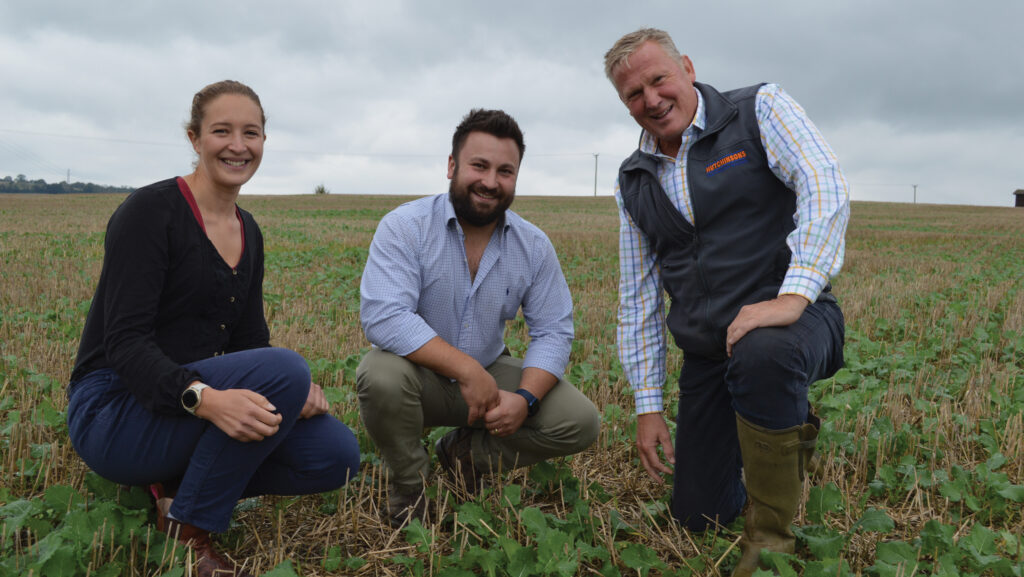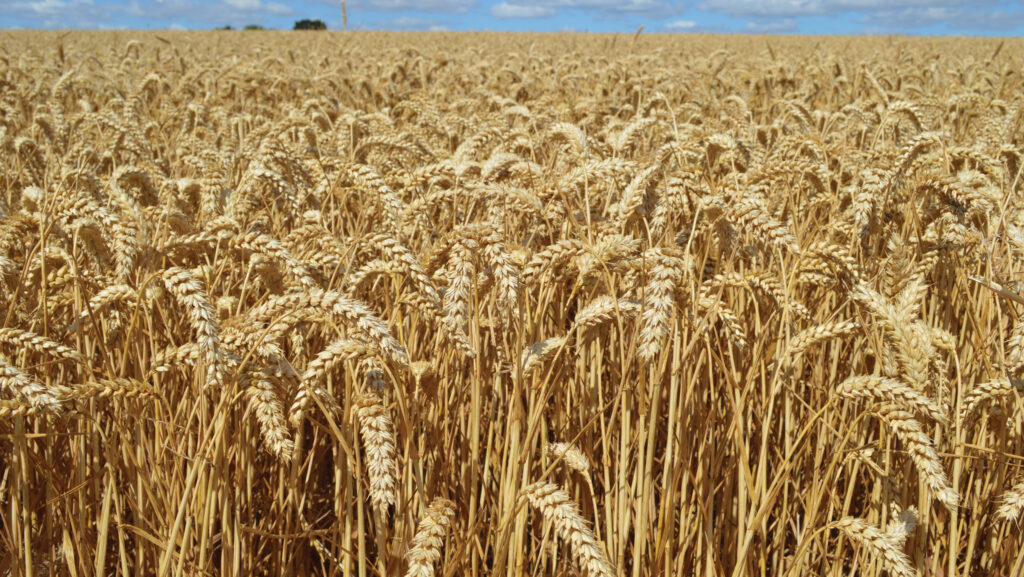No-till provides zero cost way into support scheme for grower
 © David Jones
© David Jones Kent grower Richard Day is set to use his adoption of direct drilling and precision fertiliser techniques under new environment schemes to gain more than 40% of his old direct farm subsidy without have to spend any extra cash.
He has used the two methods to grow nearly 500ha of cash crops over the past seven years, and is able to claim payments under the latest Sustainable Farming Incentive (SFI) as his foundation for future farm support.
The two options together will pay him £100/ha each year under SFI 2024. This will help offset the loss of the Basic Payment Scheme (BPS) which at its peak was paying £233.30/ha/year in 2020 before slowly tailing off to hit zero by 2028.
See also: Wetter farming: Growing typha for the construction industry
“We looked at our farming system, and looked how SFI would fit into it, rather than changing our system to suit SFI,” he tells Farmers Weekly.
As SFI was slowly introduced, he became interested in the management practices he could claim that were already under way on the farm, such as no-tillage and variable rate fertiliser, in addition to soil testing across the estate.
He has been direct drilling crops of winter wheat, oilseed rape and spring beans with good success since he become farm manager in 2016, and precision fertiliser came a year later at Horton Park Farm, between Ashford and Folkstone in south Kent.

Georgina Wallis, Richard Day, James Boswell © David Jones
Farming 650ha of arable land on the edge of the North Downs, there is a range of soils types from heavy clays, through medium loams to chalkland and light sands. Direct drilling has led to him growing 10t/ha-plus crops of milling winter wheat.
BPS gap
Richard saw the SFI scheme as firstly helping to plug the financial gap left by the demise of BPS, and secondly to help him farm better using more sustainable techniques, improve soils and control grassweeds.
The farm estate already had two 6m drills which were some 20 years old – one tined Horsch Sprinter and the other a Vaderstad Rapid disc drill – to give him versatility to switch from one to the other depending on soil conditions and crop choice.
A five-year average yield of 10.5t/ha from milling wheats illustrates that the direct-drilling system is working well, and nearly 400ha of Skyfall and Crusoe made 13% protein this summer in what has generally been a low protein national harvest.
The milling wheat on the farm generally hits industry milling wheat specifications of 13% protein, 250 hagberg and 76kg/hl specific weight in this breadmaking wheat growing corner of England.
The use of direct drilling under SFI 2024 will earn Richard £73/ha each year over a three-year agreement, while he will also be paid £27/ha for the precision application of nutrients, bringing the total to £100/ha. The farm has been applying liquid nitrogen and other nutrients at variable rates since 2017.
“We are comfortable with direct drilling and the precision application of fertiliser as we have been doing them for a numbers of years,” says Richard.
Georgina Wallis, head of environmental services at agronomy group Hutchinsons, who is advising Richard, says this is the correct approach to applying for 2024 SFI payments.
“Apply for what you know and what you can do well, and then look to add other actions slowly to that,” she says.
James Boswell, the farm’s agronomist and also with Hutchinsons, emphasises this by saying don’t try and sign up for things which may prove difficult to achieve.
“Take a sensible and cautious approach. Think what you are already doing and look to claim, while trying not a take good fertile land out of production,” he says.

Crusoe winter wheat © David Jones
Companion cropping
Taking this advice, Richard is now looking at a 5ha small trial of companion cropping in the 350-400ha of milling winter wheat he grows.
If successful, he could claim in the future £55/ha each year under the SFI’s companion cropping option.
He will look to use an air broadcaster fixed to the drill to apply linseed when drilling his winter wheat, which is usually from the last week in September to mid-October.
He has picked the small-seeded linseed as the resultant plants will not grow too high early on and are not too aggressive to crowd out the wheat.
In addition, linseed is more tolerant to pre-emergence winter wheat herbicides than other alternatives.
In addition, this approach will not interfere with his strict grassweed control strategy, which is based around direct drilling to reduce soil disturbance which can bring up weed seeds, cleaning machines thoroughly when moving around the farm, and pre-emergence chemistry based around flufenacet.
The linseed companion crop will help to improve the soil structure with its good rooting ability, and can be controlled, if necessary, with a spring “clean-up” wheat herbicide.
These SFI actions will dovetail into his existing Countryside Stewardship agreement stretching to 2027.
As part of this scheme, he is growing 170ha of a two-year sown legume fallow, based around clovers and vetch, on some of his rented land,
This pays £593/ha a year under the Countryside Stewardship option AB15, and is similar to the SFI option CNUM3 which gives the same payment.
This gives him a guaranteed income from his rented land, and his first two-year AB15 crop will be destroyed this autumn using glyphosate and should be a good entry for his winter wheat.
Other options
Other Countryside Stewardship options he is using include growing cover crops before spring beans and spring-sown maize, and this winter cover crops option (SW6) pays £129/ha annually, the same as SFI’s CSAM2 multi-species winter cover crops.
Eventually, Countryside Stewardship agreements when they expire will merge with SFI, hence these payment rates for legume fallow and cover crops are similar in the two schemes.
Richard is also set to apply for four more general options covering the whole farm under SFI.
The first is the SFI management option for his first 50ha of land, which pays £40/ha in the first year and £20/ha in subsequent years. He is also opting for the soil assessment plan (CSAM1) which pays £6/ha annually plus £97 an agreement.
These two payments will likely cover the cost of soil testing for organic matter and nutrient levels which are already under way across the farm.
The third and fourth options are to produce a plan for assessing integrated pest management which pays £1,129/year (CIPM1), and lastly a nutrient management plan at £659/year (CNUM1).
Horton Park Farm – options planned or trialled
SFI management payment
- This is paid for the first 50ha. Annual payment £40/ha for first year, £20/ha for each subsequent agreement year.
SFI actions for soil health
- CSAM1 – Assess soil, produce a soil management plan, and test soil organic matter. Annual payment £6/ha and an additional payment of £97/agreement. Action’s duration three years.
- SOH1 – No-till farming. Annual payment £73/ha. Action’s duration three years.
SFI action for precision farming
- PRF1 – Variable rate application of nutrients. Annual payment £27/ha. Action’s duration three years.
SFI action for integrated pest management
- CIPM1 – Assess integrated pest management and produce a plan. Annual payment £1,129. Action’s duration three years.
- CIPM3 – Companion crops on arable land. Annual payment £55/ha. Action’s duration three years.
SFI action for nutrient management
- CNUM1 – Assess nutrient management and produce a report. Annual payment £652. Action’s duration three years.
Countryside Stewardship
- AB15: Two-year sown legume fallow. Annual payment £593/ha. Similar annual payment rate to three-year SFI legume fallow (CNUM3).
- SW6: Winter cover crops. Annual payment £129/ha. Similar payment to three-year SFI multi-species winter cover crop (CSAM2).
Farm facts
Horton Park Farm, Monks Horton, Ashford, Kent
- Farming 950ha of land, 650ha arable and 300ha grassland
- Arable cropping – includes milling winter wheat (350-400ha), oilseed rape, spring beans, maize and 170ha of AB15 legume fallow in a Countryside Stewardship scheme
- Grassland – Leys and downland grass banks used for silage and grazing by South Devon suckler herd crossed with an Aberdeen Angus bull. Total cattle numbers 260-300

